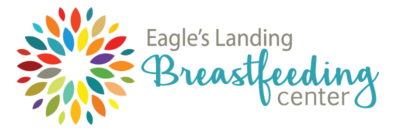A plugged or blocked milk duct sometimes occurs during breastfeeding. The ducts carry the milk from the glands to the nipple. A plugged or blocked duct occurs when milk accumulates in a duct and thickens or dries, plugging the opening of the duct. Symptoms include a tender lump near your nipple. It is usually caused by infrequent or delayed feeding or by poor sucking by the baby, failing to drain that duct, or pressure from sleep position or a bra. A plugged duct can lead to infection (mastitis) if not treated. It is important to be aware of the symptoms and start treatment as soon as possible.
What are the symptoms?
- a firm sometimes tender lump in the breast. There may be a wedge-shaped area of engorgement.
- The area may be tender or painful without firmness.
- There may be a white bump at the end of the nipple (milk blister).
- Strings or grains of thickened milk may be seen when expressing milk.
What causes a plugged duct?
It is usually caused by infrequent or delayed feeding or by poor sucking by the baby, failing to drain that duct.
How is it treated?
- Feeding and draining the area is the best treatment. Nurse as often as possible. Hand express or pump if your baby does not empty that side very well. Empty that side at least every 2 hours.
- You can gently massage your breast, working from the outside towards the nipple, before feeding. Concentrate especially on the area of the plugged duct.
- Use a warm compress on the area before feeding, or can lean over and soak your breasts in a bowl of warm water before feeding.
- You can also take a warm shower, and then try to express milk from that duct by massaging the area towards the nipple.
- Breastfeed on that breast first, and try to make sure that the baby drains the breast. You can pump or express afterwards if there is still milk.
- Massage the area while you are nursing.
- Make sure your baby latches on properly. You can try using different nursing positions to see if you can get that part of your breast to drain better. Some suggest using a position where the baby’s chin is near the plugged area.
- Make sure your bra is not putting pressure on your breast blocking drainage from that area. Be sure it is not too tight. You may need to avoid bras with an underwire.
- You can take ibuprofen or acetaminophen for pain.
- In addition to the treatments above, taking lecithin supplements may help treat and prevent plugged ducts. Lecithin is a lipid found in many foods including egg yolks and soybeans. The recommended dose is 1600 mg per day. Lecithin can be found in grocery and drug stores, health food stores, and online. There is very little research on this treatment, but it is generally considered safe.
- Breast massage from a trained lactation expert (therapeutic breast massage) can also help. Some lactation consultants and breastfeeding centers offer this service.
How can I prevent blocked ducts from developing?
- You can help to prevent the problem by keeping pressure off of your breasts. Don’t wear tight clothes or a tight bra, and avoid underwire bras. You may need to vary your baby’s nursing position from time to time. Be sure that you don’t have dried milk plugging the openings in your nipple after nursing; if you do, remove them with warm water.
- Taking lecithin daily may also help prevent plugged ducts in women who tend to have recurring problems. The dose is 1600 mg per day.
- If plugged ducts are a persistent problem, your baby may have a latch-on problem.
Complications
Complications can include mastitis, breast abscess, and galactocele (a milk-filled cyst). It is important to recognize the symptoms and start treatment early.
When to seek further care
See your lactation consultant or health care provider if:
- It does not get any better after 3 days of treatment.
- The area is turning red.
- Pain is getting worse.
- You develop a fever (100.4 or higher) or start to feel sick.
- You have any other questions or concerns.

